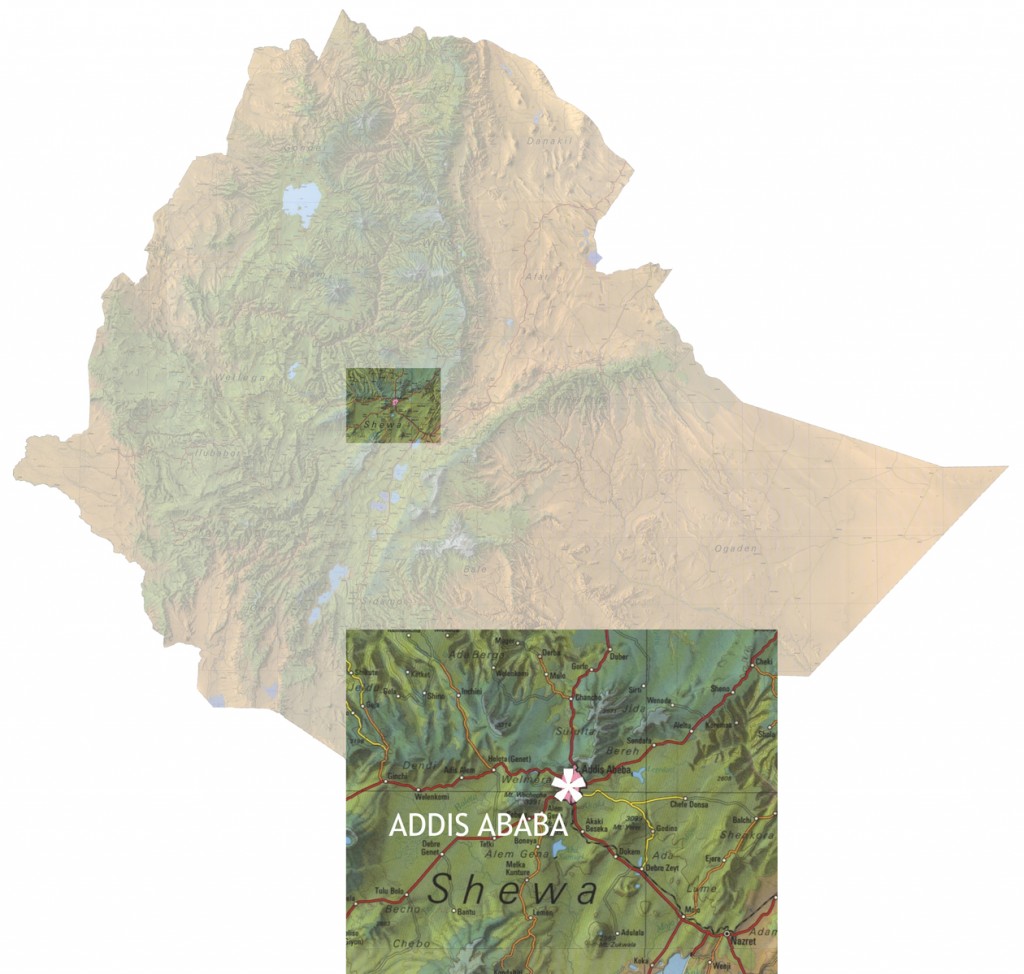Addis Ababa, the third highest capital city in terms of altitude and home to the African Union, is a relatively young and vibrant city just a little over 100 years old. The settlement wasn’t founded until 1887 by the later Emperor Menelik.II who moved from his original palace in Ankober onto Mount Entoto, the local mountain of present-day Addis Ababa. His wife Taitu, however, loved the hot springs that arose in the valley below. At her request, Menelik built a house in the valley which Taitu named Addis Ababa, meaning ‘New Flower’.
Taitu’s hot springs are still there today – with the difference that they are now part of the Finfine public bath house and feed the swimming grounds of the Hilton Hotel. What was once a sleepy provincial town has grown up in a very short time to become a vibrant metropolis. And the boom continues with Addis growing wider and taller. Skyscrapers are sprouting up like mushrooms after the rain and new shopping centres are built next to one another, and traffic moves on a three-lane highway.
Despite this, the old town of Addis still peaks through the new urban city. A herd of donkeys can be seen bringing the traffic on the main throughways to a halt. Cows are found grazing on grassy areas and traditionally dressed women huddle in front of churches. Away from the paved asphalt streets, mud and tin huts line up along the winding dirt roads and Enset plants can be seen growing in the yards while women wash their clothes in the river. Opposites collide everywhere you look. Dressed up young women teeter in their high-heels over the pitted asphalt roads, a new SUV drives by complete with a goat strapped to its roof, and sellers peddle the local hard liquor in small tin cans alongside trendy bars where business men sip their cocktails. The chants of Orthodox churches resound in the twilight between the load calls to prayer from the Minaret. This heterogeneity is what gives this city its special charm and is what fascinates its visitors. And everything falls into a harmonious coexistence and is what makes Addis Ababa special.
...
…
The city centre, called Piazza, lies in the north of the city. There’s a hustle and bustle and the streets are full of many people and vendors as well as small restaurants and bars. This is the old town centre, which includes houses that date back to times before the Italian occupation, including the Itegue Taitu Hotel, the first hotel built in the city in 1907. To date, the hotel and restaurant still operates almost in its original condition, including the furniture. Just around the corner is the Silver Street, where stores and vendors selling silver are lined up next to one another, and where silver is measured and paid in its weight. Continuing up the hill towards Entoto is Shero Meda, the large permanent market for locally produced textiles such as woven scarves, traditionally embroidered dresses and cotton blankets.
The actual commercial heart of the city, however, is located in Mercato – the largest market on the continent of Africa. Here is hustle and bustle and borderline chaos. In the well-ordered confusion you will find everything you’ve ever (or never) wanted: spices, metal products, traditional cooking utensils, imported goods, furniture. But it’s an experience enough just watching the world go by.
To find some peace and quiet, head to one of the museums of the city, in particular the Museum and Library of the Institute of Ethiopian Studies and the National Museum. In the latter you’ll find Lucy, resp. the true copy of the famous 3.5 million year old human skeleton. Another oddity is the small lion zoo, where you can view up close the rare Abyssinian mountain lions with their splendid black mane – all descendants of the last lions owned by Emperor Haile Selassie.
.
.
